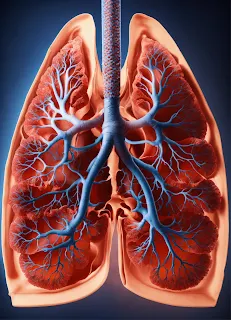OUR HEALTH AND TUBERCULOSIS
Breakthroughs in Tuberculosis Diagnosis: Harnessing Enhanced Technology
Tuberculosis (TB) remains a global health threat, affecting millions of people worldwide each year. While significant progress has been made in TB diagnosis and treatment, challenges persist, particularly in resource-limited settings. However, recent breakthroughs in diagnostic
technology are revolutionizing the way TB is detected and managed, offering hope for improved outcomes and disease control. In this article, we explore the causes and symptoms of TB, the latest advancements in TB diagnosis, and strategies for prevention and precautions.Causes and Symptoms of Tuberculosis
Tuberculosis is caused by the bacterium Mycobacterium tuberculosis, which primarily affects the lungs but can also affect other parts of the body such as the kidneys, spine, and brain. The bacterium is spread through the air when an infected individual coughs, sneezes, or talks, making TB highly contagious.
Symptoms of TB may include:
- 1.Persistent cough lasting three weeks or longer
- 2.Coughing up blood or sputum
- 3.Chest pain or discomfort
- 4.Fatigue and weakness
- 5.Fever and night sweats
- 6.Loss of appetite and weight loss
- 7.Chills and fever
It is important to note that TB can manifest differently in each individual, and some infected individuals may not exhibit any symptoms at all. This latent form of TB can still be contagious and may progress to active TB if left untreated.
Breakthroughs in TB Diagnosis
Advancements in diagnostic technology have significantly improved the accuracy and speed of TB diagnosis, enabling healthcare providers to identify cases more efficiently and initiate treatment promptly. Some notable breakthroughs in TB diagnosis include:
1. GeneXpert MTB/RIF Assay: The GeneXpert MTB/RIF assay is a molecular diagnostic test that detects TB and simultaneously assesses resistance to the antibiotic rifampicin, a key first-line drug for TB treatment. This automated test provides rapid results within hours, allowing for timely initiation of appropriate treatment.
2. Liquid Culture Systems: Liquid culture systems, such as the Mycobacteria Growth Indicator Tube (MGIT), offer a more sensitive method for detecting TB bacteria in clinical specimens. These systems provide faster and more reliable results compared to traditional solid culture methods, reducing the time to diagnosis and enabling early treatment initiation.
3. Serological Tests: Serological tests, also known as TB antibody tests, detect antibodies produced by the body in response to TB infection. While these tests offer the advantage of rapid results, their accuracy and reliability have been a subject of debate. However, ongoing research is exploring the potential of serological tests as supplementary tools for TB diagnosis.
4. Point-of-Care Testing: Point-of-care testing devices, such as the TB-LAMP (Loop-Mediated Isothermal Amplification) assay, offer rapid and accurate TB diagnosis at the primary healthcare level. These portable and easy-to-use devices enable healthcare providers to diagnose TB quickly, even in remote or resource-limited settings.
Preventions and Precautions
Preventing the spread of TB requires a multi-faceted approach that includes both preventive measures and precautions to minimize transmission. Key strategies for TB prevention and precautions include:
1. Vaccination: The Bacille Calmette-Guérin (BCG) vaccine is the only licensed vaccine for TB prevention. While BCG vaccination is not fully effective in preventing TB, it can reduce the risk of severe forms of TB in children, such as meningitis and disseminated TB.
2. Infection Control Measures: Implementing infection control measures in healthcare settings, such as proper ventilation, respiratory hygiene, and use of personal protective equipment, can help prevent the spread of TB among healthcare workers and patients.
3. Treatment of Latent TB Infection: Individuals with latent TB infection, who are infected with TB bacteria but do not have active disease, can benefit from preventive treatment to reduce the risk of developing active TB in the future. Treatment options may include isoniazid preventive therapy (IPT) or combination therapy with isoniazid and rifapentine.
4. Contact Investigation: Identifying and screening close contacts of individuals with active TB can help identify additional cases and prevent further transmission. Contact investigation involves identifying individuals who may have been exposed to TB and conducting diagnostic tests to detect latent or active infection.
5. Adherence to Treatment: Ensuring adherence to TB treatment regimens is crucial for successful treatment outcomes and prevention of drug resistance. Healthcare providers should educate patients about the importance of completing the full course of treatment and provide support to address barriers to adherence.
Conclusion
Breakthroughs in TB diagnosis, coupled with effective prevention and precautions, offer hope for controlling the spread of this infectious disease and improving treatment outcomes. From advanced molecular tests to point-of-care diagnostics, technology is playing a pivotal role in accelerating TB diagnosis and reducing the burden of disease. However, addressing the global TB epidemic requires a comprehensive approach that encompasses vaccination, infection control, contact investigation, and treatment adherence. By harnessing enhanced diagnostic technology and implementing evidence-based strategies, we can work towards a future where TB is no longer a leading cause of morbidity and mortality worldwide.
Thanks for reading,
Have a nice day. 😊









Comments
Post a Comment